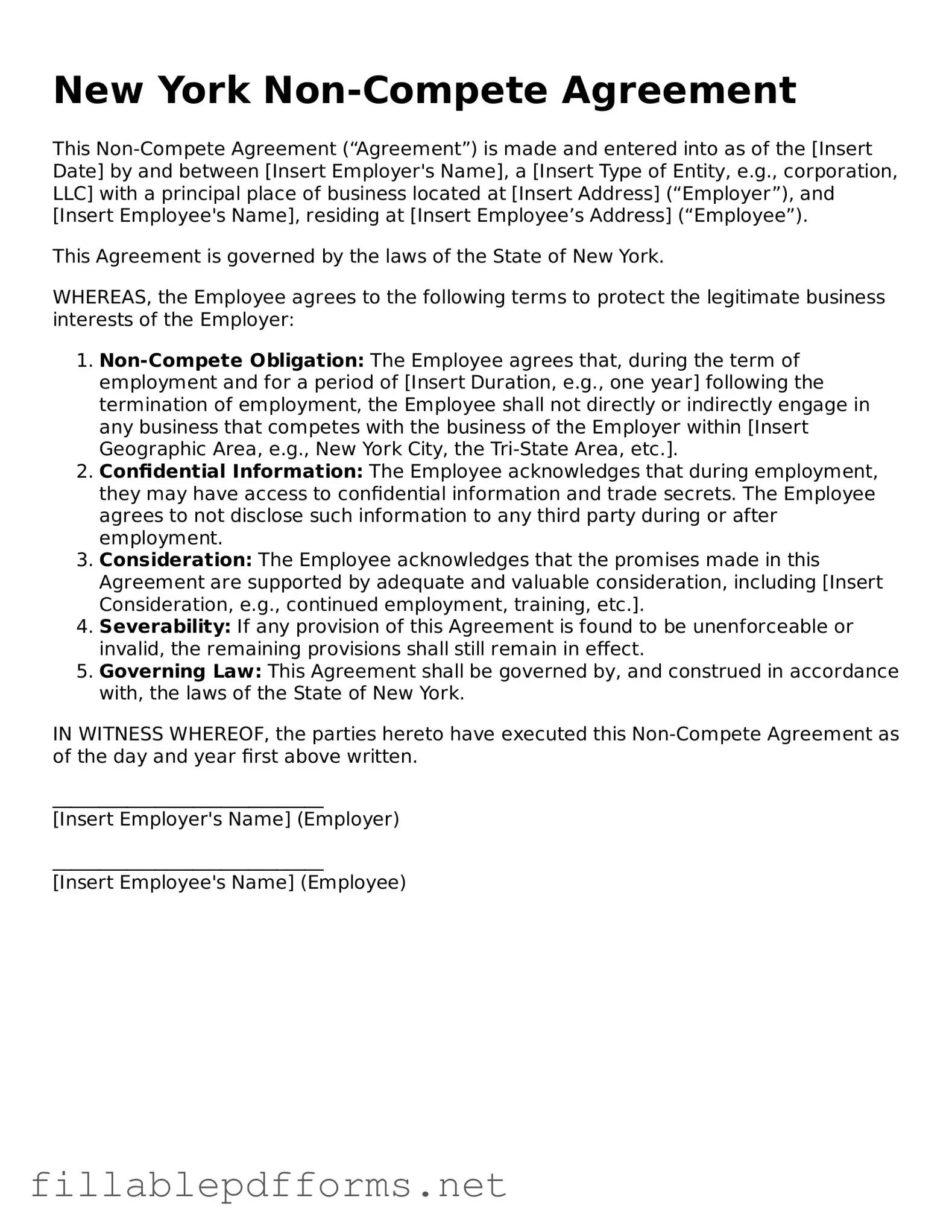Attorney-Verified Non-compete Agreement Form for New York State
A New York Non-compete Agreement is a legal document that restricts an employee from working for competitors or starting a competing business for a specified period after leaving their current employer. This form aims to protect a company's confidential information and business interests while balancing the employee's right to seek new employment. Understanding its implications is crucial for both employers and employees navigating the job market.
Launch Editor Here
